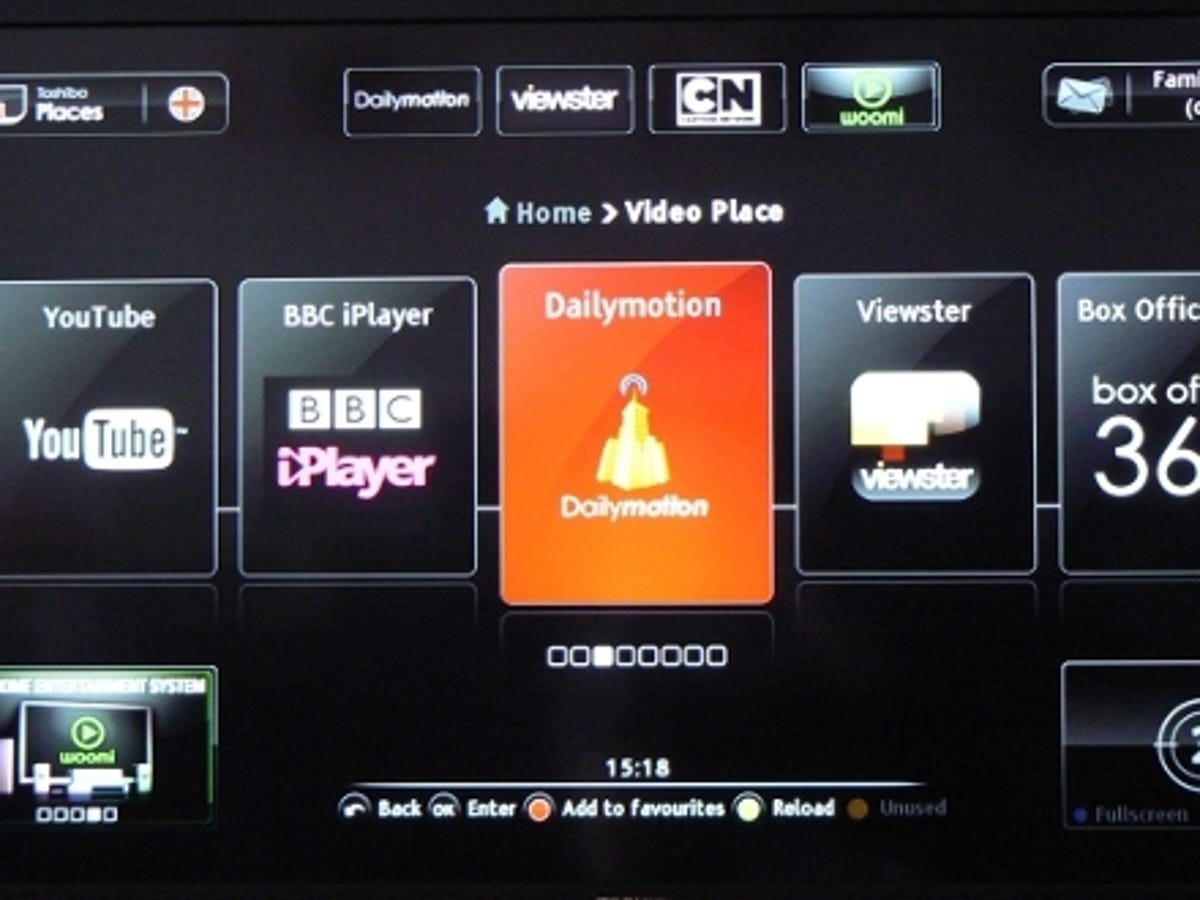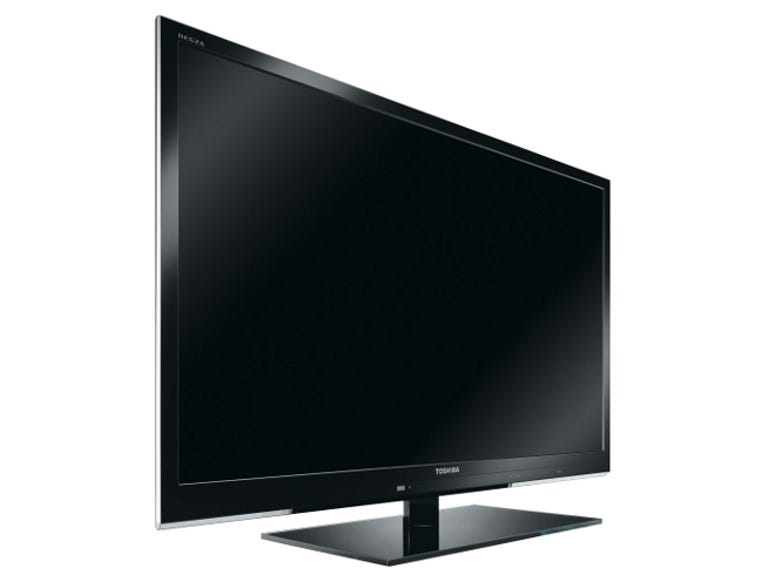 Why You Can Trust CNET
Why You Can Trust CNET Toshiba Regza UL (42UL863B) review: Toshiba Regza UL (42UL863B)
Toshiba has packed the 42-inch Regza 42UL863B LED TV full of interesting features. Unfortunately, the telly's disappointing where it really counts -- audio and picture quality.
The Regza 42UL863B is one of the first Toshiba TVs to feature the company's new Smart TV Internet platform. It also has a built-in camera that can detect different users' faces and automatically switch between presets. All this will set you back around £600, which isn't too pricey for a 42-inch, 1080p, LED-illuminated LCD TV.
The Good
The Bad
The Bottom Line
Design
In terms of appearance, the 42UL863B is an improvement on Toshiba's previous TVs. The brushed-metal effect on the narrow bezel, as well as the chrome strips that run down either side of the TV, look quite sophisticated. It's surprisingly slim too, measuring just 35mm deep.
Toshiba has added two tuners to this set. The first allows you to pick up Freeview HD broadcasts via a standard aerial, while the second is a high-definition satellite TV tuner. Unfortunately, the latter doesn't conform to the freesat HD spec, so, when you tune the channels, you simply get all the free-to-air channels available from the Astra 19.2°E satellites, including all the different BBC and ITV regional variations. This is quite messy, especially as the electronic-programme-guide data isn't always supported either.
Next to the satellite and aerial feeds, you'll find the usual line-up of sockets, including four HDMI ports, a set of component inputs, a Scart socket and a VGA input. These ports will cover off most people's needs when it comes to hooking up their AV devices.
Toshiba has also included two USB ports. If you plug a hard drive or memory key into one of these, you can either record the channel you're currently watching, or schedule recordings via the rather basic but functional EPG. Although the TV has both terrestrial and satellite tuners, you can only use one source at a time, so you can't record BBC One on the terrestrial tuner while watching BBC Two on the satellite tuner, for example.
Media streaming
As well as including an Ethernet port, Toshiba has also built Wi-Fi into the set, which is to be applauded, as most manufacturers still only support Wi-Fi via optional, and usually expensive, USB dongles.
What's not so impressive is this model's media-streaming features. We couldn't get it to play commonly supported file formats, like Xvid, DivX and MKV, over a network. That's bizarre, as it played these files back from a hard drive connected to its USB port without any problems.
Internet features
The 42UL863B supports Toshiba's new Smart TV platform. This gathers together online content into a system called Places. Unfortunately, it's not very impressive. For example, although both iPlayer and YouTube are listed in Places, selecting them actually brings up an error box that tells you to exit the Places menu and instead access these services from the main menu. That's pretty shoddy interface design.

There are some interesting offerings in Places, including BoxOffice365, the Viewster on-demand service, and video-sharing site Dailymotion, but, on the whole, it lags behind Sony and LG's platforms.
Camera
One of the TV's neat features is its built-in camera. This is used to detect whether someone is watching the TV. If they're not, it dims the brightness level to save energy. You can also set it up to recognise different faces and switch between presets using facial recognition. We couldn't get this feature to work reliably, which perhaps isn't surprising given that the camera has quite a low resolution.
Picture quality
This set isn't short of picture-processing features. It's home to Toshiba's Active Vision M100HD system, which includes 100Hz scanning alongside its picture-processing wizardry. There's also Toshiba's Resolution+ upscaling system for adding more sharpness to standard-definition material.
When it comes to picture quality, this TV suffers from some of the same issues that affected last year's LED tellies from Toshiba. The LED backlight is the biggest problem. This TV suffers from noticeable pooling of light around the edges of the display, a problem that manifests itself as grey circles when you're watching darker scenes. Most manufactures now seem to have tackled this problem, but Toshiba isn't among them.
The picture woes don't end there. The colour palette doesn't seem to be as natural as it is on LED sets from Sony, Samsung and LG. This TV just doesn't seem able to achieve a good balance between cranking out bright, vivacious colours, and handling more subtle hues. You either get one or the other, but not both at the same time. The panel's viewing angle is also quite tight -- there's a noticeable loss of contrast if you're watching the set off centre.
It's not all bad news, though, as the Resolution+ system does a decent job of sharpening up standard-definition TV channels and DVDs without adding in tonnes of picture noise. On the whole, though, the picture quality is a step behind that of many competing TVs.
The audio quality isn't much better. Unlike Panasonic, Toshiba hasn't made extra room in the slim chassis to add beefier speakers. Instead, you're stuck with tiny drivers that produce tinny and weak audio. The TV's not just lacking in bottom-end grunt. It also sounds weedy in the mid-range, so dialogue lacks clarity.
Conclusion
We're disappointed by the Toshiba Regza 42UL863B. It offers some interesting features, like Freeview HD and satellite tuners, facial-recognition software and integrated Wi-Fi, but it just doesn't perform well in terms of picture and audio quality.
Edited by Charles Kloet


